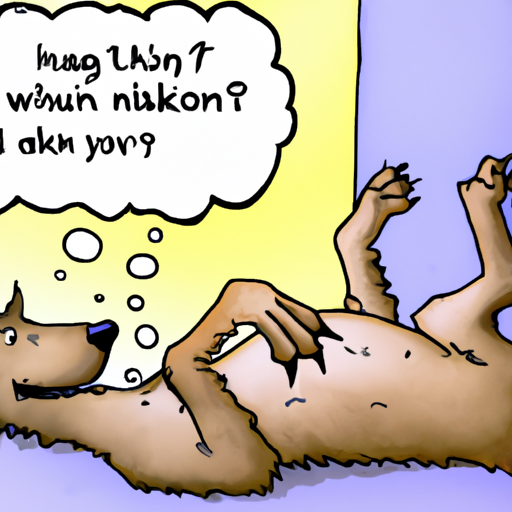It’s a familiar sight for any dog owner: you find just the right spot on your dog’s belly or back, and their leg starts to kick uncontrollably. Sometimes it’s a gentle thump, other times it’s a full-blown twitch. But have you ever wondered why dogs thump their legs when scratched? This behavior is actually quite fascinating, and it has a lot to do with your dog’s instincts, physiology, and the way they perceive touch.
- Table of Contents
- Understanding the Scratch Reflex
- The Role of Nerves
- Benefits of Scratching Your Dog
- When Scratching Becomes a Concern
- How to Scratch Your Dog Properly
- Frequently Asked Questions
Key Takeaways
– Dogs thump their legs when scratched due to a reflex arc reaction.
– Certain areas on a dog’s body, such as the belly or the side, are more sensitive to scratching or tickling.
– Scratching your dog can have benefits like bonding and flea detection, but excessive scratching could indicate a problem.
– Consult a vet if your dog seems excessively itchy or uncomfortable.
Understanding the Scratch Reflex
Dogs thump their legs when they’re scratched in certain areas due to a primitive response known as the scratch reflex. This reflex is a reaction to irritation. When you scratch your dog, they interpret it as a kind of itch or tickle. The leg thumping is their attempt to get rid of this irritation, much like how you might instinctively scratch an itch.
This article from PetMD goes into the scratch reflex in more depth, explaining that the reflex is more pronounced in certain areas of a dog’s body.
The Role of Nerves
The thumping action is initiated by nerves in your dog’s skin. When you scratch your dog, these nerves send a message to the spinal cord, which then sends a message to the leg muscles causing them to contract and relax rapidly, resulting in a thumping movement. This process is known as a reflex arc.
This OneTopDog article discusses more about how dogs’ nerves and behavioral responses work.
Benefits of Scratching Your Dog
Scratching your dog can actually have several benefits. For one, it can help you detect any fleas, ticks, or skin abnormalities. It also strengthens the bond between you and your dog, as many dogs enjoy being scratched and will associate the activity with positive attention.
Another article on OneTopDog provides further information on how to care for your dog’s skin and coat health.
When Scratching Becomes a Concern
While it’s normal for dogs to thump their legs when scratched, excessive scratching could indicate a problem. If your dog is constantly scratching or biting themselves, or if they seem uncomfortable, it could be a sign of allergies, a skin condition, or parasites.
This OneTopDog article discusses the signs and symptoms of common dog health problems, including skin conditions.
How to Scratch Your Dog Properly
Just like people, dogs have areas that are more sensitive to touch. These “sweet spots” usually include the belly, the side of the body, and the base of the tail. When scratching your dog, be mindful of their reactions. If they seem to be enjoying it, you’re probably hitting one of their sweet spots. If they seem uncomfortable or try to move away, it’s best to stop and try a different spot.
Frequently Asked Questions
Q: Do all dogs thump their legs when scratched?
A: Not all dogs display the scratch reflex in the same way. Some might thump their legs vigorously, while others might barely react at all.
Q: Is it bad to scratch my dog’s sweet spot?
A: Not at all! As long as your dog seems to enjoy it and it’s not causing them any discomfort, feel free to scratch away.
Q: My dog is constantly scratching themselves. What should I do?
A: Constant scratching could be a sign of a skin condition or allergies. If you notice your dog scratching a lot, it’s best to consult a vet.
So, the next time you see your dog’s leg thumping away while being scratched, remember that it’s a completely normal and often enjoyable reaction for them. And, as always, if you notice any unusual behavior or signs of discomfort in your dog, don’t hesitate to contact a vet or a professional dog care advisor.



